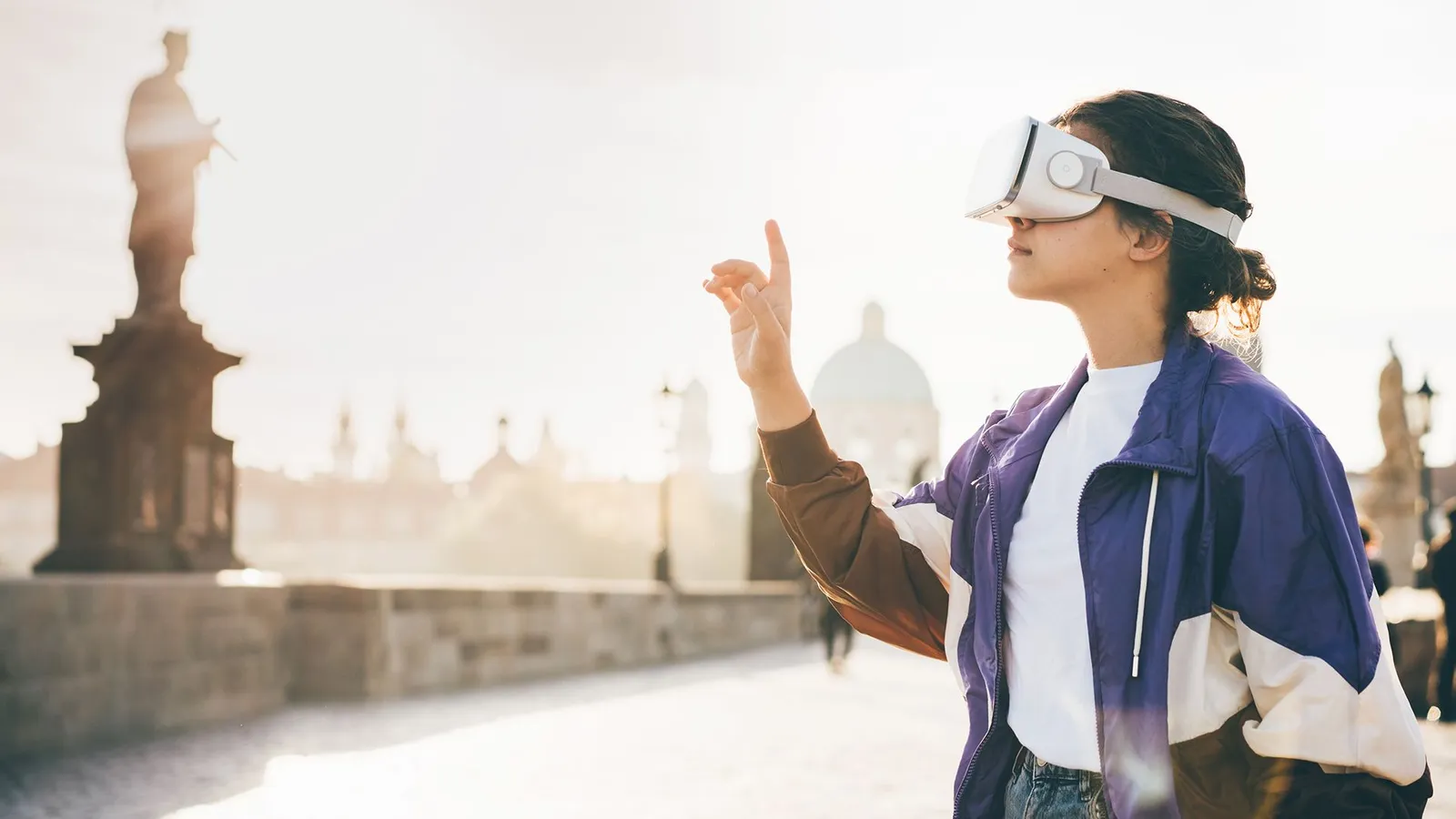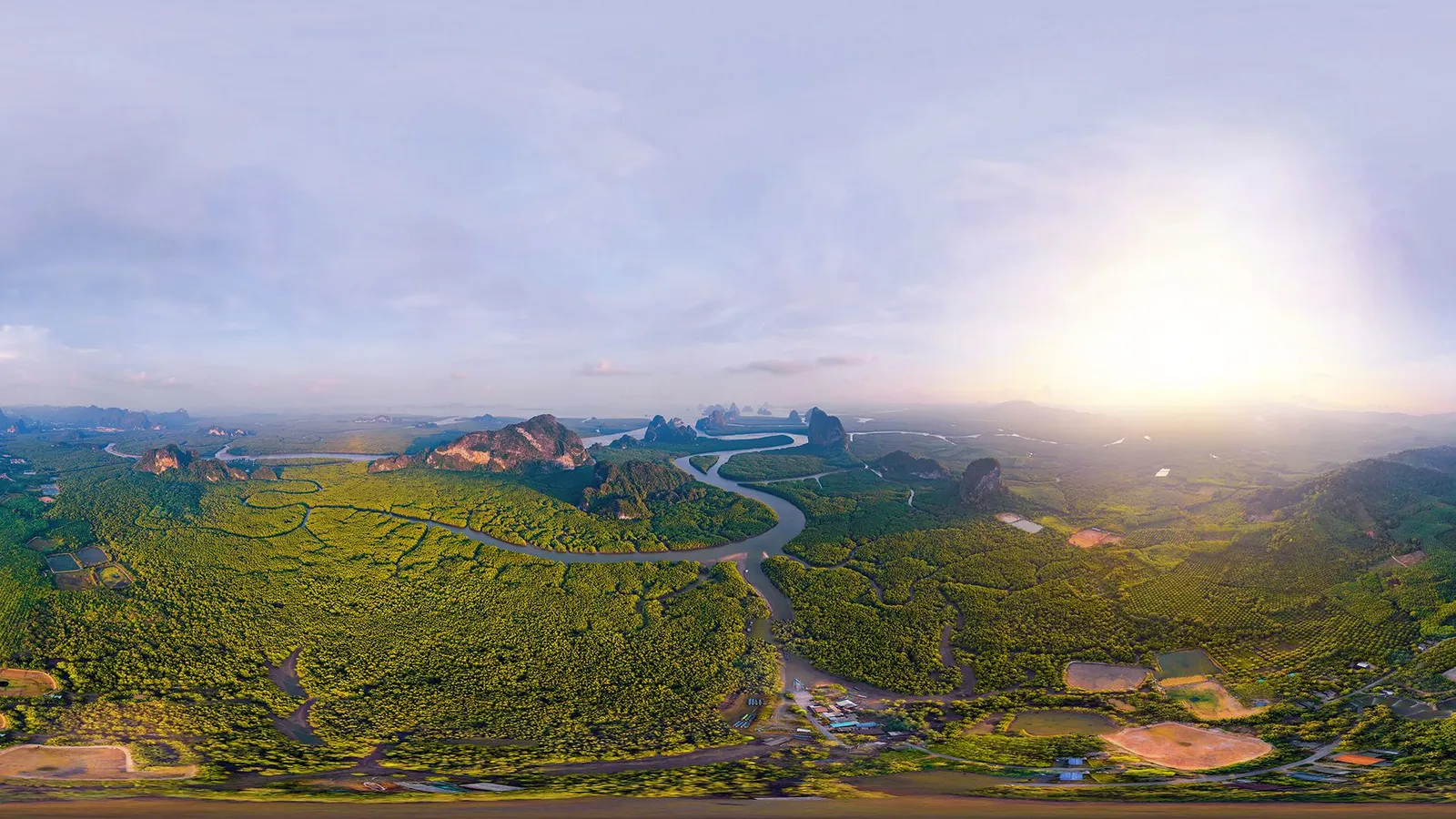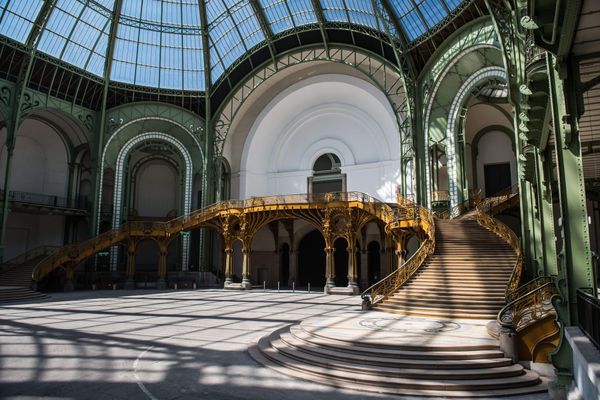“Where would you like to travel the most right now?”—appeared the question on a card of a self-discovery board game during a meeting with friends. The questioner takes it granted that the modern man not only likes to travel but can afford to do so. Therefore it’s not intrusive to ask such a question at a job interview, on a first date or a meeting with friends. But as we’ve all experienced in recent years, sometimes our toolset can be very limited when it comes to going on new adventures. But we have really tried to adapt to this more closed, narrower world. One such new tool is the possibility of virtual travel and thus of exploring remote landscapes that may never be physically accessible. But perhaps we still don’t know what exactly this new device is, what we got from it, and how it will develop us in our everyday lives and free time. In the upcoming Hype Lab article of the DIALOG month, we’ll search for answers to these questions!
Virtual reality can be created in two ways: through render designs created by designers in the creative industries or through films that capture reality in 360 degrees. In the present context, the latter serves to satisfy our travel desires. Even before the pandemic, an entire industry was built on services that offer a few minutes or even hours of adventure through our real world’s natural and built heritage. These couch travel agencies use amazing technologies to try to bring us, for a service fee, what others can experience on a real journey.
Why does this activity have so much press coverage? It’s a fair question because sitting on a couch, learning about new stories and cultures is nothing new. About the oldest of such activities, the act of reading, Socrates already claimed in antiquity, that you learn more about the world by reading than by traveling. Thank God, book learning hasn’t faded away from the everyday adventurer’s toolbox. In comparison, a virtual journey can do much more for your senses. Whereas, when reading a book, it is the unfolding of the plot and the lack of visuality that makes it an adventure to discover the characters we invent, VR journeys add not only visual but also verbal content to the experience.

But we all know that half an hour on the couch is nothing compared to a two-week holiday in Spain. Sitting at home is, in many ways, an incomplete experience. First of all, the journey’s philosophical aspects, its phenomenological interpretation, or in other words, the conditions of our consciousness of existence remain unfulfilled. American philosopher Thomas Nagel says that the phenomenological information of an experience cannot be described, it can only be lived. Also, the available platforms cannot satisfy the curious roaming nature of tourists. “This simply can’t be recreated in virtual reality,” says Erick Ramirez, a philosopher at Santa Clara University. “I do think that there are some kinds of tourist experiences where the value in them is in the doing, not just in the seeing and hearing, and it’ll be tough for VR to replicate.” According to Ramirez, it is safe to call this genre the most authoritarian of guided tours.
Secondly, looking at the technical nature of VR travel, the hardware equipment of such games and the person using them—even with expensive high-tech headsets—does not allow for more than half an hour of roaming because they are uncomfortable and can even cause physical discomfort, such as nausea. Furthermore, we can only see as much of a world as someone has been able to film and design—so at the very least, a human eye has already limited our options.
Thirdly, from an economic interest point of view, the firms providing such services, by their very nature, approach the dissemination of knowledge with market logic. If someone travels to India via video, they may never see the details that a VR company obscures to create a more pleasant experience or maximize profits.
In addition to the many safe forms of travel available today, we need to recognize that our past experiences and travel habits are not part of normal, ordinary lives. It is tempting to look back on our travels now as if we were living in the golden age of travel. International tourism more than doubled in the first 20 years of the millennium, from 700 million in 2000 to almost 1.5 billion in 2019. In this period, travel—for those fortunate enough to enjoy it—has become an indispensable complement to a full life, a synonym for well-being. Ninety percent of the planet’s tourism has been subject to restrictive measures or has been cut off as a result of the trauma of the pandemic. What was once seen as the privilege of the modern wealthy has become a hobby for the entire Western middle class, according to pre-Covid figures. Should we nowadays accept that the bait has been thrown in front of us and that what was a regular experience will only remain a fond memory?

It is a blessing in disguise that VR travel is also a good way to solve the problem of mass tourism; in fact, the two are evolving mutually generative. According to Valeriy Kondruk, the CEO of virtual reality travel company Ascape, their app downloads doubled in the first quarter of 2020 as the new type of coronavirus outbreak went global—so the recipe is working. The undeniable advantage of VR travel is that those who would not be able to physically visit certain places for financial or location reasons could do so. Moreover, it can help you to visit places that would be inaccessible to tourists because they are banned by conservationists: for example, the Palaeolithic cave paintings of Lascaux. By reimagining our historic sites, these initiatives could represent value even in an online environment, as Lee Bacon, head of digital at the BBC’s natural history department, puts it: “Even viewing nature digitally has been scientifically proven to help peoples’ mental wellbeing, which feels especially important right now”.
Sure, this industry is also waiting for that revolutionary tech invention that will enable us to have a multi-sensory experience of a landscape in another space. Since the world’s scientists and the tech industry are in a fierce research race, we can already see the uncanny directions the world will take in the future. Researchers are working on more and more powerful VR features, including haptic suits,—says Samuel Greengard, author of Virtual Reality. While creating a full-body suit with a higher sensory experience can make a video of the Amazon or Antarctica more realistic, it still doesn’t satisfy the deeper, more elemental needs that drive us to travel. The device is known as ActiveSkin, which will allow you to discover virtual destinations at home, could be a big hit in the 2030s. “We can already make transistors so small that they can penetrate the skin,” Dr. Ian Pearson, a leading futurist, engineer, writer and inventor, who runs Futurizon, a futuristic consultancy, told a BBC reporter. He says they send a signal to our nervous system “We could be manipulated to feel the sunshine and salty breeze on a beach in the Maldives, or the cool marble of the Taj Mahal.”
Even sooner than that, augmented reality contact lenses will be available, allowing us to shape our environment to our liking in minutes. Also, if you haven’t had enough of science fiction, around 2050, we can expect to upload our minds into cyberspace using nano-devices attached to our synapses. Thus, our brains will inhabit a new kind of fully functional humanoid robot, and with it, “You’ll be able to log on in the UK, say, and choose your robot in Australia,” says Pearson. “Then you’ll be able to inhabit its body and do anything a human would, and more. You’ll also be able to think faster and have a bigger memory so that the travel memories will be with you longer.” All this doesn’t seem so crazy when you consider that it took humanity ten years to equip everyone in the developed world with the technology to land on the moon, giving them a smart device that used social media and artificial intelligence to open up the world on an unimaginable scale, connecting people and devices regardless of location, from everyday conversations to robotization of driving to performing surgeries at a distance.

Virtual roaming at home, in contrast to the philosophical experience of human existence, technological equality and the lack of free discovery of knowledge, is seen as beneficial for its environmental protection and historical preservation. One of the greatest cultural and economic consequences of the pandemic shock is reshaping ourselves for a more cautious and less open world.
Although we have come a long way from our initial question, the points made here can only lead us to reflect further on the essential value of travel, the relational attitude of man towards his environment.
Source: psyche.co | aeon.co | nationalgeographic.com | bbc.com
Source of the cover image: Tonda/Getty Images/TheGuardian

Hungarian designers present their latest collections at Budapest Central European Fashion Week

Art Basel launches new art fair in Paris










